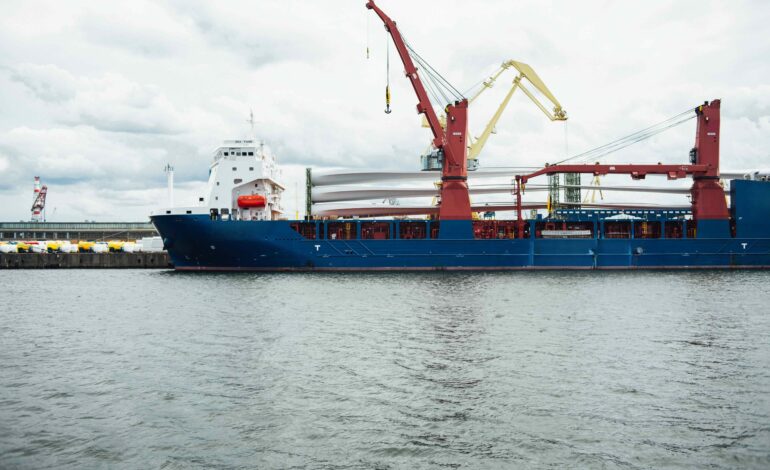
Case Studies on Successful Bunker Fuel Switching Operations
The maritime industry is increasingly adopting cleaner and more efficient fuel options to comply with environmental regulations and enhance sustainability. Bunker fuel switching, which involves transitioning from traditional heavy fuel oil (HFO) to alternative fuels, has proven to be a viable strategy. Here are several case studies highlighting successful bunker fuel switching operations:
Case Study 1: Transition to Low-Sulfur Fuel Oil (LSFO)
Background: A major global shipping company undertook a significant initiative to switch its fleet from high-sulfur fuel oil (HSFO) to low-sulfur fuel oil (LSFO) to comply with international emissions regulations.
Implementation:
- Preparation: Extensive planning and testing were conducted to ensure that ships could operate efficiently with LSFO. This included compatibility tests and engine adjustments.
- Fuel Supply Chain: Stable supply chains for LSFO were secured through collaborations with suppliers and refineries.
- Training and Procedures: Comprehensive training programs were provided for crew members, and operational procedures were updated to ensure safe and efficient handling of LSFO.
Results:
- Emission Reductions: The switch to LSFO resulted in significant reductions in sulfur oxide (SOx) emissions, contributing to cleaner air quality.
- Operational Efficiency: Despite initial challenges, the transition did not adversely affect the operational efficiency of the fleet.
- Environmental Impact: The adoption of LSFO contributed to improved environmental performance, aligning with sustainability goals.
Case Study 2: Adoption of LNG-Powered Vessels
Background: A major shipping group invested in liquefied natural gas (LNG)-powered vessels as part of its strategy to reduce greenhouse gas emissions and improve environmental performance.
Implementation:
- Fleet Modernization: New LNG-powered vessels were commissioned, and existing vessels were retrofitted to accommodate LNG fuel systems.
- Infrastructure Development: Collaboration with ports and fuel suppliers facilitated the development of LNG bunkering infrastructure.
- Crew Training: Comprehensive training programs ensured crew competency in handling LNG and operating new systems.
Results:
- Emission Reductions: The use of LNG significantly reduced emissions of sulfur oxides, nitrogen oxides, and particulate matter, and also contributed to lower CO2 emissions.
- Operational Performance: LNG-powered vessels demonstrated strong operational performance and reliability.
- Environmental Leadership: The adoption of LNG positioned the shipping group as a leader in adopting cleaner fuel technologies.
Case Study 3: Utilization of Biofuels
Background: A container shipping company initiated a project to test and utilize biofuels derived from sustainable sources to reduce its carbon footprint.
Implementation:
- Pilot Projects: Biofuels produced from waste and renewable resources were tested on several vessels through pilot projects.
- Partnerships: Collaboration with biofuel producers and research organizations ensured a sustainable and reliable supply of biofuels.
- Engine Compatibility: Extensive testing confirmed the compatibility of ship engines with biofuels, with minimal modifications required.
Results:
- Environmental Benefits: Trials demonstrated significant reductions in CO2 emissions compared to conventional fuels.
- Scalability: Successful trials led to the integration of biofuels into regular operations, highlighting scalability and sustainability.
- Corporate Responsibility: The use of biofuels aligned with the company’s commitment to reducing environmental impact.
Case Study 4: Methanol Conversion
Background: A ferry operator converted one of its vessels to run on methanol as a cleaner alternative to traditional marine fuels.
Implementation:
- Conversion Process: The vessel underwent conversion to equip it with dual-fuel engines capable of running on methanol and conventional fuels.
- Infrastructure and Logistics: Collaboration with methanol producers and port authorities facilitated the establishment of methanol bunkering facilities.
- Safety Measures: New safety protocols and crew training programs were implemented for the safe handling of methanol.
Results:
- Emission Reduction: Methanol use resulted in significant reductions in sulfur oxides, nitrogen oxides, and particulate matter emissions.
- Operational Success: The methanol-powered vessel demonstrated operational feasibility and reliability.
- Innovation and Adaptation: The project showcased innovative approaches to reducing emissions and adapting to new fuel technologies.
Conclusion
These case studies illustrate diverse approaches and strategies that shipping companies are employing to switch to cleaner bunker fuels. Successful transitions to low-sulfur fuel oil, LNG, biofuels, and methanol demonstrate the industry’s commitment to reducing emissions and enhancing sustainability. As the maritime sector continues to evolve, these examples provide valuable insights into the challenges and benefits of transitioning to alternative fuels, paving the way for a greener future.





